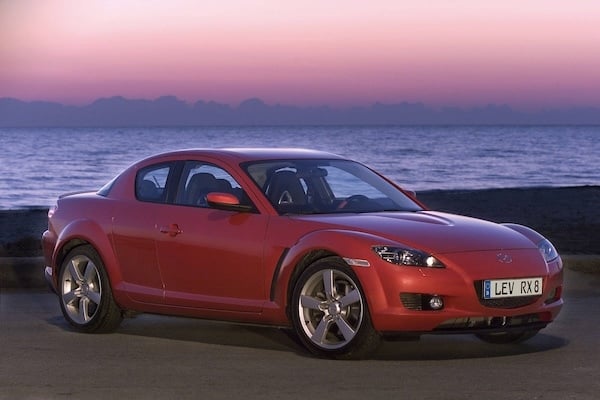Identifying Potential: What Makes a Car a Future Classic?
Individuals with disposable income face numerous options for investment. Investing in cryptocurrency could either significantly increase your wealth in a matter of weeks or result in a total loss. Alternatively, purchasing government bonds offers returns that may not keep pace with inflation over a decade, or one might opt for real estate along the Atlantic coast, where values are expected to rise due to global warming. Another option is investing in a vehicle.
Criteria for Identifying Future Classics
Vehicles can also serve as a profitable investment, provided they meet certain criteria. Primarily, the vehicle must be of significant age – a minimum of 20 years, though vehicles 50 years or older are more desirable. However, this does not apply to unique, high-value automobiles such as Ferraris, Lamborghinis, Porsches, and others that were originally sold for more than 300,000 EUR.
Secondly, the vehicle must be preserved in its original state or as close to it as possible, boasting low mileage. A word of caution to aspiring drifters: your modified Nissan 200SX equipped with a Toyota engine might not appreciate in value over the next decade. Moreover, the vehicle should be in the best condition possible, as issues like rust or mold within the interior can be challenging to eliminate. This holds true unless you're acquiring the vehicle at a bargain price and are prepared to invest significantly in its restoration.
Thirdly, the new owner must diligently maintain the vehicle in pristine condition. This entails protecting it from rust, avoiding damp storage areas to prevent cabin rot, and shielding it from prolonged sun exposure to prevent paint fading. Prospective buyers should plan their storage solutions for a classic car well in advance of purchase.
Fourthly, the vehicle should not be excessively common. While you might find a third-generation Volkswagen Golf with a 1.9 TDI engine and power windows in impeccable condition, its abundance makes it unlikely to appreciate in value over a decade beyond its upkeep costs. Conversely, a V6 Golf R32, notable as the first car to feature a dual-clutch gearbox (DSG), represents a more promising investment. Similarly, century-old Ford Model Ts, despite their age, might not offer the same investment appeal as their rarer contemporaries.
Additional criteria exist, yet the ones outlined are crucial. Overlooking even a single condition could mean the difference between profiting from your investment and merely dreaming about it. Next, we explore the fourth criterion further – selecting the right car model. Determining whether a vehicle is a future classic involves careful consideration and insight.
The scarcity of a vehicle significantly impacts its value – for example, the Kelley Blue Book lists the value of the Golf R32, in good condition, as surpassing its original price back in 2003. However, models like the Golf 1.9 TDI or 1.4 TSI are unlikely to achieve such valuation unless they feature unique modifications, such as interiors lined with crocodile skin and exteriors coated in gold.
Moreover, the historical significance of a car plays a crucial role in its popularity. The DeLorean DMC-12, for instance, may not have gained its iconic status without its memorable appearance in the blockbuster 'Back to the Future'. A vehicle's chances of being recognized as a classic in the future are further enhanced if it is both rare and out of production.
Highlighting Models with Potential
The BMW Z3 and Mazda RX-8 are prime candidates for future classics due to their limited sales and current low prices. With the RX-8 being the last model to feature Mazda's rotary engine, its value is expected to rise in the next decade. Similarly, models such as the Alfa Romeo GTV, which are becoming increasingly scarce, the Honda S2000 (Honda's unique roadster), and the SAAB 9-5 (the final model before SAAB's bankruptcy) are also worth watching. For those interested in higher-end vehicles, the discontinued Dodge Viper, the Mitsubishi Lancer Evo (also ceased production), and the Jaguar F-Type with a manual transmission for its uniqueness, stand out as potential future classics.
Certain vehicles, despite being produced in large numbers, defy expectations by rapidly appreciating in value. Once their market price reaches its lowest point, these cars can experience a dramatic increase, multiplying in value within just a few years.
This phenomenon uniquely characterizes the Porsche 911 series, meriting individual discussion. The value of these vehicles gently declines for approximately two decades following their release, only to then sharply escalate. This pattern was notably observed with the air-cooled 911 models. Currently, the 20-year-old 996 Carrera stands as the most affordable option in the 911 lineup, yet it's anticipated that its market value will significantly rise within the next decade.
The BMW 3 Series (E30) serves as another illustrative example. A decade ago, the prices for the first-generation M3 models soared, aligning closely with the cost of new M3s. Nowadays, well-maintained standard E30 models command prices comparable to the more recent E90s.
Investing Wisely in Potential Classics
The market for classic cars is expansive and welcomes new entrants annually. The potential of certain vehicles can be forecasted when they reach the 10 to 15-year mark, and for some, even earlier predictions are possible. Nonetheless, it's crucial to understand that certainty is never absolute. Even if you encounter information from five distinct sources claiming the Honda S2000 is destined to be a future classic, such predictions do not guarantee its eventual status.
---
Discover your dream car within our Car Categories, or explore our Classic Passion Shop to uncover thrilling items from our associates!















